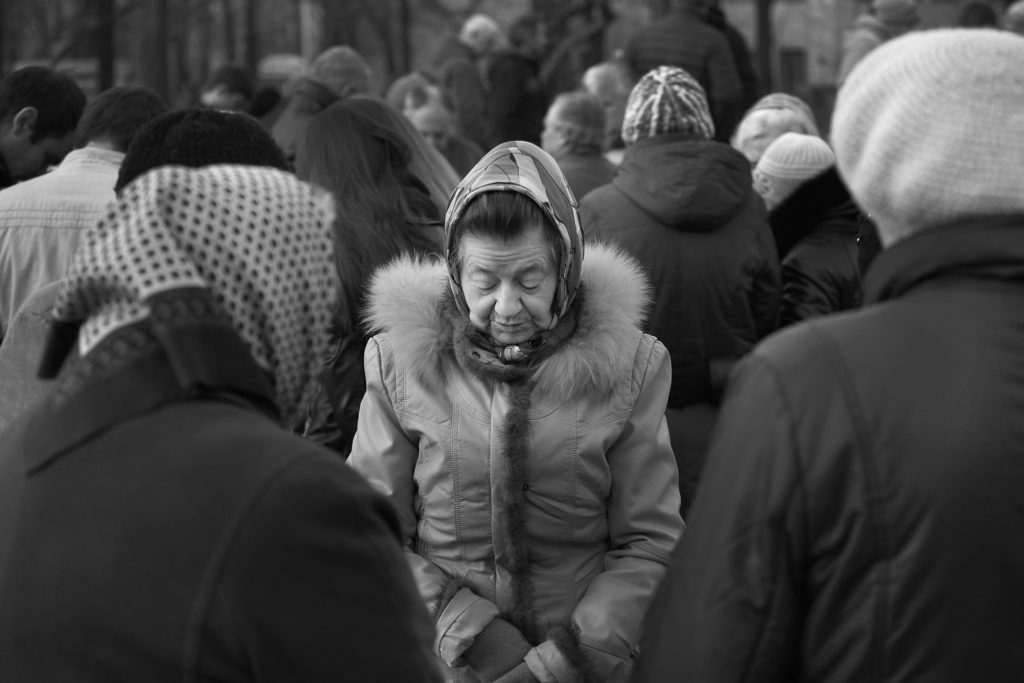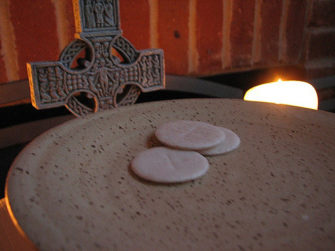
In Catholic spirituality, ritual and ceremony are cornerstones of prayer. In the context of peacebuilding, this form of prayer can be powerful. I would like to reflect on this style of prayer in Catholic tradition as a complement to Dr. Tanya Schwartz’s presentation on the role of prayer in Faith-Based Organizations (FBOs) working on peacebuilding. In Schwartz’s lecture, prayer was presented as largely therapeutic or as something to define organizational identity. In the three FBOs she studied, prayer functioned mostly as a means of spiritual sustenance for the organizations and their members, something that strengthened them to do their work and provided relief for the high stress of working in conflict situations. Or it served to define a special identity that bolstered common commitment to the organization’s mission. While therapeutic prayer is a definite part of Catholic spirituality, and prayer in many forms is a powerful identity marker in Catholicism, the ritual forms of Catholic prayer demonstrate a different role that prayer can play in peacebuilding contexts.
In Catholic thought, the ritual sacraments are very poignant expressions of prayer. These seven ceremonial rights are, according to Catholic tradition, defined by the life and teaching of Christ. The belief is that when these rites are performed with the valid materials, actions, and words as defined by Catholic tradition, and with sincerity and intention by the minister and the participants, that God’s sanctifying grace is made directly manifest. And while the stereotypical image of prayer may be something more extemporaneous, and typically geared toward petition or requesting something of God, ceremonially defined sacraments, like the Eucharist, give Catholics expressions of prayer that are more complex. Whatever one might ask of God, one is asking in some form for God’s grace. And the sacraments are symbols of God’s grace given for the salvation of humanity, but ones that, Catholic theology claims, actually effect that which they signify. That is, the sacraments are taught to actually make God’s grace present. And wrapped up in the ceremonial form that brings about this manifestation of God’s grace are expressions of worship and thanksgiving, which are other powerful intentions of prayer besides petition. So, while one might commonly imagine prayer as a person or a group beseeching God for forgiveness or strength or help, the sacraments are prescribed ways in which Catholics invoke those things directly, even automatically, within a ceremonial rite that simultaneously expresses the apt gratitude and praise for the granting of that grace.

The significance of this grace-granting cannot be overstated in terms of Catholic theology. The ultimate human end is salvation, and one requires grace to get salvation, so the grace of the sacraments is quite simply in Catholic understanding absolutely necessary to the final end of human life. Catholic anthropology presumes the marring of Original Sin, a principle by which human beings are destined to fall short of goodness if they do not receive divine assistance. This theology has much to say to peacebuilding. It says that one variable that must be dealt with in any situation of violence and conflict is the pervasiveness of sin, and the inability to overcome it without God’s grace. Prayer in this paradigm is indispensable for peacebuilding because it invokes the divine help without which stable peace could not be realistically hoped for.
However, there is another more functional and pragmatic way in which ritual and ceremonial prayer can benefit peacebuilding. Ritual and sacrament can serve as powerful vehicles for social transformation. Catholic rituals, such as the Eucharist, can provide a space in which conflicting sides can meet to pursue reconciliation and transformation and in which community can be restored. Robert Schreiter, in reflecting on the Eucharist, notes that it has particular power to aid reconciliation because it invites all parties, on both sides of conflict, to be transformed and healed in light of God’s mercy, but with an insistence on accountability and truthfulness that are vital parts of genuine reconciliation, (Peacebuilding, 230-2). For Schreiter, rituals model “alternative social formations,” and he describes the place of rituals in post-conflict efforts at reconstruction and reconciliation this way: “Sometimes all these rituals can say is that there is an intention to live differently in the future, and that the resentment about what happened in the past will not be allowed to dominate the future” (227-8).
Ritual prayer, then, can stimulate the moral imagination and make it a potentially powerful catalyst of peace. Paul Ricoeur referred to the utopian dimension of the imagination, whereby the imagination has an eschatological force that creates new possibilities (Lectures on Ideology and Utopia, 265-6). Those new possibilities cannot come to be without the imagination’s provocation, and part of what makes that provocation operational is that it can work from a shared base of understanding and comprehensibility. In ritual prayer, actors in conflict can draw on shared religious beliefs, and within the prayerful space of the ritual, model and project new possibilities.
This view obviously presumes a shared point of religious heritage and identity across lines of conflict, meaning this dynamic may be harder to apply in situations where this is not the case. In contexts where common religion is not present there are legitimate concerns about the use of prayer and ritual. In Schwartz’s lecture, she noted how non-faith based agencies worry about prayer representing proselytization, and sensitivity to such a worry must be recognized. But still, inter-religious action work by Catholic Relief Services, as highlighted in a series of articles for Contending Modernities, demonstrates the value and importance of shared action for bridging inter-religious divides and enhancing cooperation for development. The commentary by Nell Bolton of CRS emphasizes carefully respecting the boundaries of traditional religious authority, while “creatively orient[ing] it towards collaborative ends.” Indeed respecting the integrity of religious identities is crucial, but even in pluralistic religious contexts, shared ritual action has the potential to be a bridging activity that can help transform possibilities for interaction between different religious groups. Atalia Omer, observing inter-religious action in Bosnia and Herzgovina, notes that inter-religious action has imperfections that can leave in place or even accent ethno-religious divides, but acknowledges the value to inter-group collaboration for peacebuilding. Crafting shared rituals respectful of individual traditions, or sharing in rituals where appropriate, can foster engagement between narrative spaces and cultivate empathy, which Omer describes as necessary elements for successful inter-religious action for peacebuilding.
The therapeutic functions of prayer are not to be ignored. The empowerment and assurance that workers in FBOs can feel from prayer are doubtlessly valuable. However, ritual prayer can provide an even more valuable asset. FBOs and Catholic Church actors must not abdicate the responsibility to address conflict and violence in concrete ways beyond prayer, ensuring that it serves as a catalyst to real action for the sake of development and social cooperation, as well as advocacy and effort for structural change. But ritual prayer is able to be such a catalyst by creating the chance to imagine different ways of existing beyond the strife of conflict, making such peaceful alternatives into more realistic possibilities.

